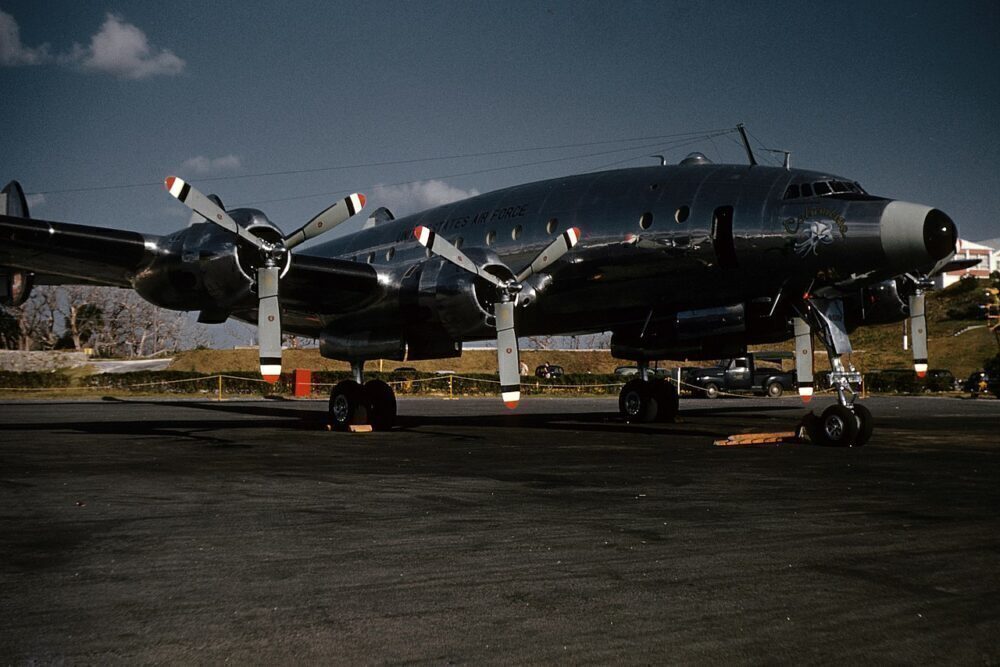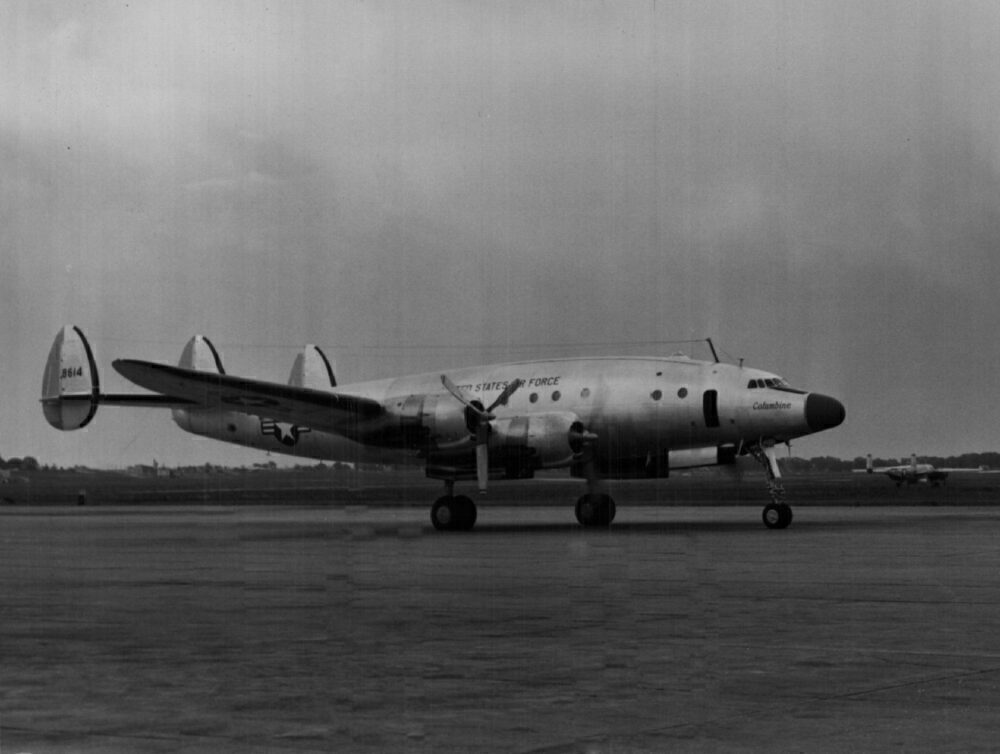Today, the Boeing VC-25, a military version of the Boeing 747, is synonymous with the Air Force One. However, it wasn’t always the Queen of The Skies that fulfilled this role. Many people are also aware of another Boeing jet that preceded the jumbo. Yet, it was actually a Lockheed model that was first given this special callsign. Let’s take a look at the aircraft.

The very first
When President Dwight D. Eisenhower flew on a Lockheed VC-121A-LO Constellation in the early 1950s, the plane would eventually be referred to as Air Force One, being the first plane to use this callsign. This monicker was established following an incident in 1953 when Eastern Air Lines 8610 crossed paths with Air Force 8610. The latter plane was carrying the incumbent president.
More known by the name of Columbine II, the Constellation held Lockheed model number 749-79-36. It rolled off Lockheed’s Burbank assembly on December 22nd, 1948, and was bailed to Lockheed to assist with the Lockheed Air Service International maintenance facility in Keflavík, Iceland.

Humble beginnings
The plane was then purchased by the Air Force. Subsequently, Eisenhower hit the skies across the globe with it.
“Eisenhower used the aircraft for a trip to Korea shortly after he was elected president in November 1952, and the next year the aircraft was converted into a VIP transport for him. The aircraft’s transformation included the installation of a mahogany desk that featured buttons to activate a phone that could connect to landlines at airport terminals,” Air & Space Magazine shares.
“Unlike today’s Air Force One, a modified Boeing 747, the Constellation could not hold the president’s entire staff plus a gaggle of reporters. The cabin of Columbine II had a scant 16 seats. And because the aircraft flew before the age of digital automation, the flight crew had several more positions than today’s crews: radio operator, flight engineer, and navigator in addition to pilot and co-pilot.”

Time to level up
By November 1954, Eisenhower had upgraded this used unit to a Lockheed’s Super Constellation. Therefore, Columbine II is the sole Air Force One to serve a single president. It is also the only presidential aircraft that has been sold to a private party.
“A year later, the aircraft was transferred to Pan American World Airways for two years before returning to the Air Force. Retired from military service in 1968, it was put into storage at Davis-Monthan Air Force Base in Arizona and sold by auction to a private owner two years later,” The Museum of Flight shares.
“By 2003, when that owner had failed to find a buyer for Columbine II, the airplane was sent to a boneyard at the Marana Regional Airport near Tucson.

A new era
The world had entered the jet age by the end of the 1950s. Subsequently, the White House had to keep up with the times. Toward the end of Eisenhower’s second term, the Air Force added the first of three custom Boeing 707-120 jets (VC-137s) to its fleet. These planes were designated SAM (Special Air Missions) 970, 971, and 972.
Stay informed: Sign up for our daily and weekly aviation news digests.
The White House shares that in 1962, President John F. Kennedy became the first commander-in-chief to fly in a jet specifically built for presidential utilization. VC-137C SAM 26000 was the first of two Boeing VC-137C Air Force planes specifically configured and maintained for the use of the head of state. It conducted its initial flight on August 10th, 1962, and was officially given the designation of Air Force One whenever the President was on board. Notably, the jet was the first that had been earmarked for the President from its very first day in operation.

SAM 26000 was replaced at the end of 1972 by another VC-137, SAM 27000. As a result, the Boeing 707 held the title of Air Force One until 1990. After that, the Boeing 747 took the helm. The Queen will continue its role for several years amid the 747-8 taking on the next requirements.

The position remains
US officials are even planning for future decades when it comes to the aircraft that fulfill the role of Air Force One. The Air Force has even granted contracts to companies to look into concepts surrounding supersonic presidential transport. The vehicles that handle executive air travel have come a long way since the more humble days of Columbine II. This aircraft was purchased and moved from Arizona to Bridgewater, Virginia in March 2016 where it is undergoing restoration work.

Altogether, Columbine II may be a shadow of subsequent presidential jets when it comes to technological capabilities. However, for its time, it fulfilled its role well. Air travel became more prominent and the requirements of world leaders changed heading into the 1960s. So, it was only natural that the president would have its own bespoke aircraft.
What are your thoughts about the original Air Force One aircraft? What do you make of the future planes that are billed to fulfill in the coming years? Let us know what you think of the history and future of presidential travel in the comment section.
[ad_2]
Source link


